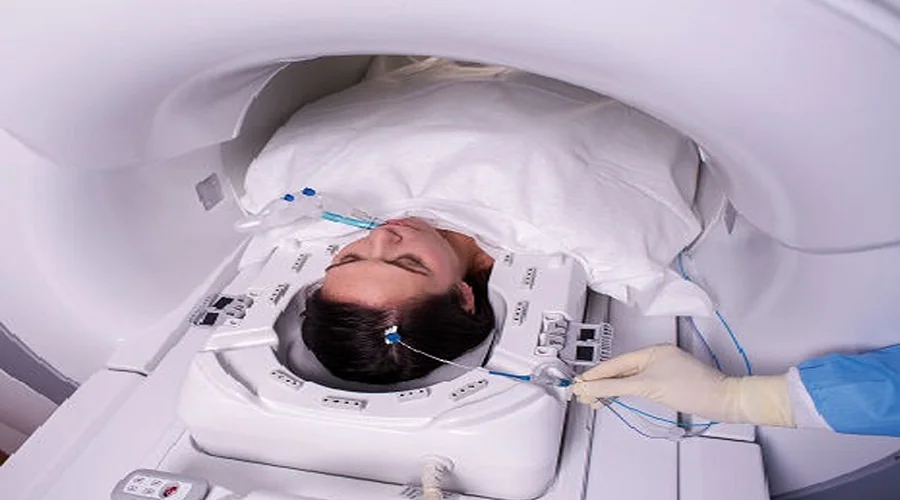Cutting-Edge Laser Therapy Revolutionizes Brain Tumor Treatment
MRI-guided laser interstitial thermal therapy (LITT) is emerging as one of the most groundbreaking advancements in brain lesion treatment in the last 20 years, offering patients a safer, faster, and more targeted option—particularly for tumors once considered inoperable.
This state-of-the-art technique involves inserting a small laser fiber into the brain through a 5 mm incision using stereotactic navigation, which functions like a GPS for the brain. The patient remains under anesthesia while being transferred to an MRI scanner. There, the laser fiber delivers precise thermal energy to heat and destroy the tumor, guided by real-time MRI monitoring that measures tissue temperature, ensuring only the target area is affected and surrounding healthy brain tissue is preserved.
According to recent studies, MRI-guided LITT has shown tumor control rates of 70–90% in selected cases of gliomas and metastatic brain tumors. This is an excellent minimally invasive option for deep-seated lesions which are otherwise difficult to reach by traditional surgery. Most commonly, we use this technique to treat brain tumors, lesions causing seizures or epilepsy, or to facilitate other medical treatments like chemotherapy.
“This technique is a game-changer for patients with tumors that were once deemed untreatable through surgery,” said Simon Buttrick, MD, Neurosurgeon at Memorial Neuroscience Institute part of Memorial Healthcare System in South Florida. “Patients often return home the next day with minimal discomfort and no activity restrictions.”
MRI-guided LITT is most used for:
- Primary brain tumors (gliomas)
- Metastatic tumors resistant to radiation therapy
- Lesions causing seizures
- Epilepsy
Key Benefits of MRI-guided LITT:
- Minimally invasive: Entire procedure performed through a single 5 mm incision
- Rapid recovery: Patients are typically discharged within 24–48 hours
- Precision ablation: Real-time MRI monitoring minimizes damage to surrounding tissue
- Versatility: Ideal for deep-seated gliomas, metastatic tumors, lesions causing seizures or epilepsy, and refractory to radiation
“As a minimally invasive alternative to traditional craniotomy, MRI-guided LITT represents a major leap forward in how we approach complex brain tumors,” added Christopher DeMassi, MD, Neurosurgeon and Chief of Memorial Neuroscience Institute. “It allows us to treat tumors in areas that were previously off-limits, with far fewer risks and faster recovery for our patients.”
With over 1,500 procedures performed annually in the U.S. and the number continuing to rise, MRI-guided LITT is proving to be a safe and effective alternative to traditional craniotomy, particularly for high-risk or elderly patients.




